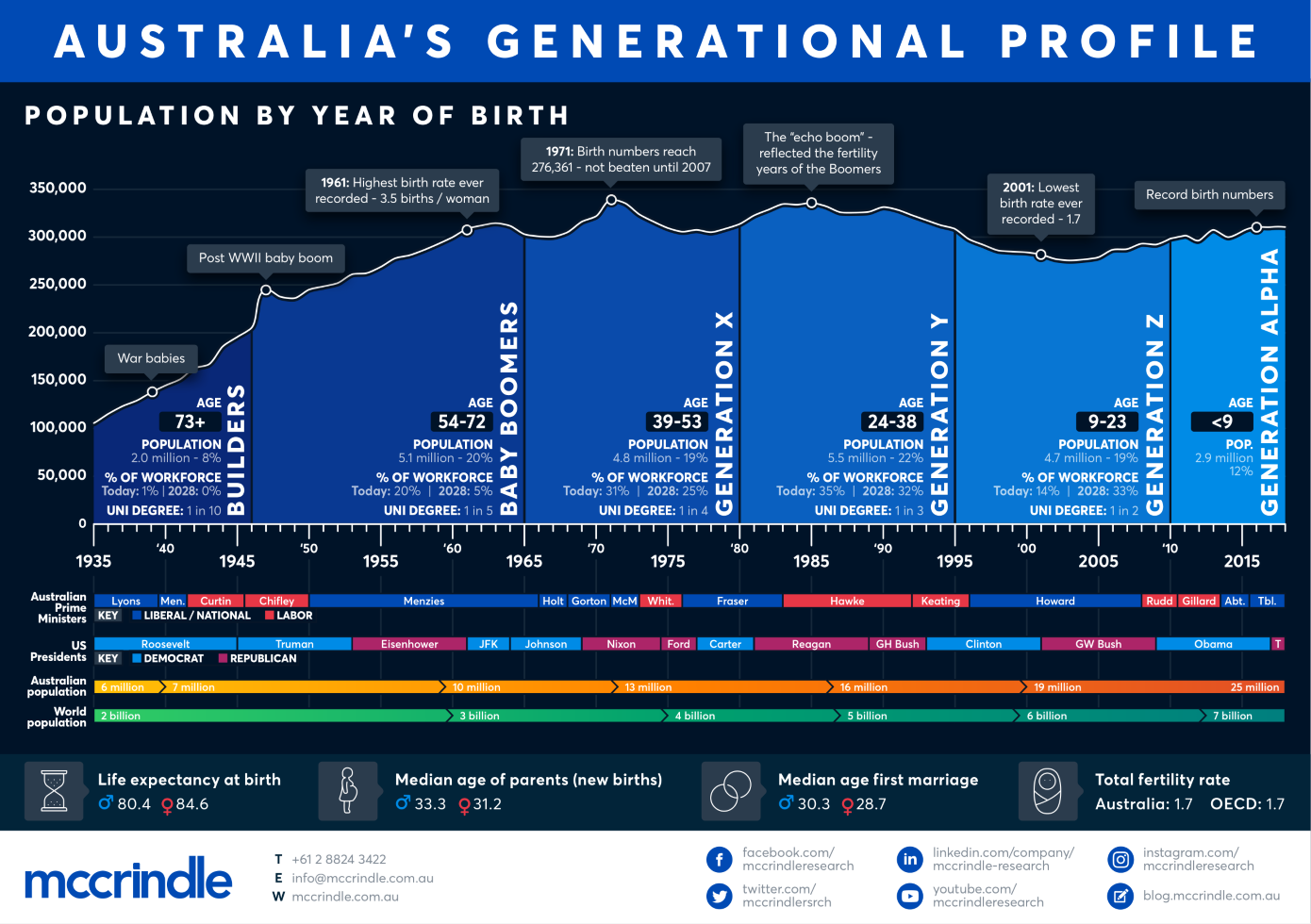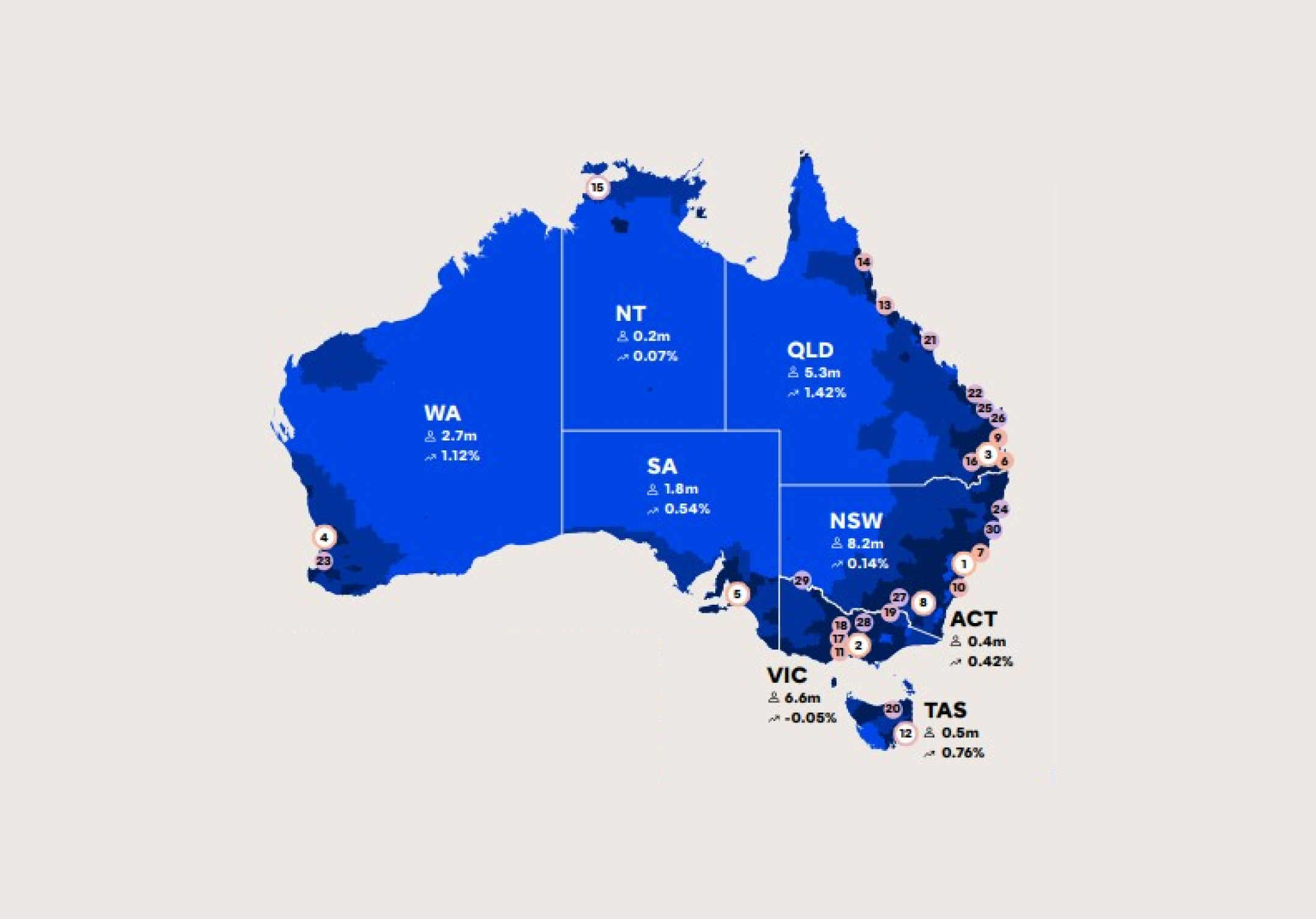Key insights about Australia’s Population Growth

At 11pm on a quiet Tuesday night in Australia, the population clock of the nation ticked over to 25 million.
From the very first national census on the 2nd of April in 1911, which counted 4,555,005 non-indigenous Australians, to the quiet Tuesday night of the 7th of August this year, Australia grew by 20,444,995 people over the course of 107 years, 4 months, and 5 days.
Australia is now 4.5 times bigger than Australia in 1911, with the growth coming from natural increases, net overseas migration, and the inclusion of indigenous Australian into the national census.
In 2017, Australia grew by 387,969 people, 147,548 of those from natural increases (38%) and 240,421 from net overseas migration (62%).
The number of net overseas migration can be explained by the world’s perception of Australia. An annual survey conducted by the Economist (popularly known in Australian media as the survey that ranked Vienna over Melbourne for the first time in seven years), found that three out of ten of the world’s most liveable cities are in Australia.
But as we celebrate the 25 million mark and mourn the dethroning of Melbourne as the world’s most liveable city, we must also contemplate the reality that more than one in three (36.4%) Australian residents were born overseas. If Australia can’t just be defined now by “football, meat pies, kangaroos and Holden cars” then what is our collective identity?
And with the Organisation of Economic Co-operation and Development’s (OECD) estimation of 3.2 million Australians living below the national poverty line, we may still be the “Land of the Middle Class” for many but how can we be more of “the lucky country” for all?
The United Nations High Commissioner for Refugees’ (UNHCR) recent estimation of 68.5 million people being forced from their homes around the world has implications for the international community, but what is the role of “the land of the fair go” amidst this staggering statistic?
These are all questions worth asking ourselves as we await the milestone of 26 million on another quiet night (or day) in 2021.
At McCrindle we are passionate about making data visual and consumable. Below is a summary of the key data points about Australia’s population and generations.






